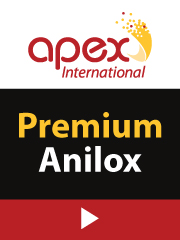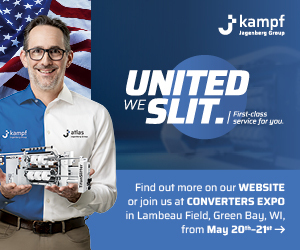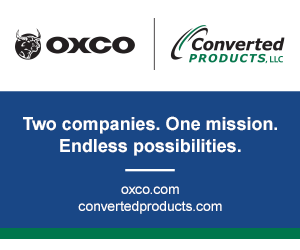Fido's Food Goes GLOSSY
- Published: April 01, 2001, By Teresa Koltzenburg, Senior Editor
Pet cuisine is like everything else these days: It's getting more and more sophisticated. Did you know you can buy doggie bagels at some (human) bagel chains? (Then again, there are entire pet delis and bakeries, so doggie bagels at your local bagel eatery isn't that unusual.)
Even the bagged variety of pet food (the dry dog/cat chow) is getting more advanced — inside and out. As far as the advancements inside… well, those doggie taste-test trials can be left up to Dog World, one of our sister publications. PFFC will stick to the bag advancements.
Bonar Packaging, Burlington, Ont., Canada, is a large producer of these pet food bags. Part of the Hood Packaging Group, Bonar's Burlington plant has been in the bagmaking business since 1948.
Fifty years later the operation moved into the radiation curing realm with its purchase of Prime UV curing lamps expressly for pet food bag production. The move, says general manager Steve Wilkie, was prompted by a shift in the pet food packaging market. “I've been in packaging for a number of years, and I've not seen a market shift as quickly as this one did; it went from old technology of two-color, three-color line print with just a water-based overlacquer to six-color process print, eight-color process print with UV — overnight. If you could see a pet food bag over four years old and compare it to today's, you would see just how much they've changed.”
The Machine and Material Makers
Bonar's massive 130,000-sq-ft Burlington facility specializes in the pinch-bottom, open-mouth (PBOM) bags that encase Fido's (if you're a cat person, Fluffy's) din-din. The plant's other major market segment is in bags for food-based products, for flour, sugar, those types of products.
With 90 hourly employees, the operation runs 24 hr/day, five days/week also producing pasted-valve, stepped-end (PVSE) bags for dry cement products. Wilkie reports that almost all of the operation's bagmaking equipment — tubers, bottomers, and a pinch-bottom machine — was manufactured by Windmoeller & Hoelscher. “We have six converting machines that produce the gamut of bags we make,” he adds. “Canada is a lot smaller than the States, so when we buy a piece of equipment, we have to buy a piece of equipment that can do many things. We don't have the luxury of buying a machine that does only one bag style. We buy machines that are versatile and flexible.”
According to Wilkie, W&H's bagmaking equipment provides the company with all the versatility and flexibility it needs.
Another part of Bonar's versatile production structure is its use of an in-line lamination process that ultimately results in the bags' final film/paper composite construction. Tolko supplies the plant's multiwall, and Fraser Paper supplies the outer, “printable” substrate. Mobil supplies the plant with polypropylene, which is used to line the operation's pet food bags. Its polyethylene (used for its other bag applications) is manufactured internally. H.P. Fuller supplies glues.
The plant prints its colorful pet food containers with a W&H Olympia flexo press as well as with two other flexo machines. Inks are supplied by Reiger and Sun Chemical and UV coatings by Craig Adhesives.
UV: The Sizzle That Sells
So, today Fido's/Fluffy's eats are housed in finely printed, glossy-bag packaging that Wilkie says has the “sizzle” that sells. “The message on the outside is what sells the product, so graphics are increasing. Marketers want what they call the ‘pop’ — something that has eye-catching, attention-getting qualities.”
Though elaborate graphics gave pet food packaging a refreshing, more sophisticated look, it was UV technology that gave it its final “pop,” says Wilkie. Back in 1998, he explains, Bonar was among the first to use UV overlacquer for pet food packages. “UV was not new to packaging and to the industry, but it was new to multiwall. Our customers wanted it, needed it, so being a leading packaging company, we moved to it quickly. Then, like everything else, after the market leader tries it and everyone says, ‘Wow!’ — others got on the band- wagon, too.” Today, notes Wilkie, approximately 80% of pet food bags produced in the market are process printed and UV overlacquered.
But Bonar was among the first, and Prime UV was there to supply the company with the system that gave Bonar's pet food bags the final “pop” they needed — and fast,” says Wilkie. “The Prime UV equipment was retrofitted easily to our six-color press. The curing lamps have served us very well; it's all we really need. The next step for us would have been major capital, but what we have has done the job.”
Challenges Continue
Wilkie admits Bonar pursued a very economical course in purchasing its Prime UV system, but, he notes, investing in the system had another advantage. “The UV lamps had short lead times versus us [going through the process of buying] a new press. We made the move into UV with the Prime UV lamps. We came up to speed right away, and we've had no issues since.”
Bonar's general manager seems to be quite happy with another “non-issue” at his Burlington plant. “We went 600 days without a lost-time accident,” Wilkie says proudly. “And those were working days, so that's over two years without one.”
These days, says Wilkie, Bonar continues to produce a variety of pet food bag packaging, but even with the plant's UV curing capability, he notes it's bit of a challenge to keep up with the market. “Years ago brands might have lasted three years before a redesign; now, they are moving at about every 18 months. And they are fragmenting the market at a fantastic rate. You've got such specific types as hairball-reducing food for cats — that comes in three sizes! What next?”
Doggie bagels, food that alleviates hairballs — what next, indeed! But one thing is certain: It's all going to need packaging, and Bonar likely will be there to make our furry friends' favorite bags.
CONVERTER CONNECTION
Bonar Packaging
Burlington, Ont., Canada
Ph: 905/637-5611
Fax: 905/637-1066
SUPPLIER INFORMATION
Prime UV Dryers, Carol Stream, IL; 630/681-2100; primeuv.com
Windmoeller & Hoelscher Corp., Lincoln, RI; 401/333-2770; whcorp.com
Reiger Inks, Downsview, Ont., Canada; 416/661-1030
Sun Chemical Corp., Fort Lee, NJ; 210/224-4600; sunchemical.com
Craig Adhesives and Coatings, Newark, NJ; 877/344-1483
Tolko Manitoba Kraft Papers, The Pas, MB, Canada; 204/623-7411
Fraser Papers Inc., Stamford, CT; 203/705-2800
Mobil Co./Chemical Films Div., Pittsford, NY; 716/248-8320
H.B. Fuller Co, St. Paul, MN; 888-HBFULLER; hbfuller.com












